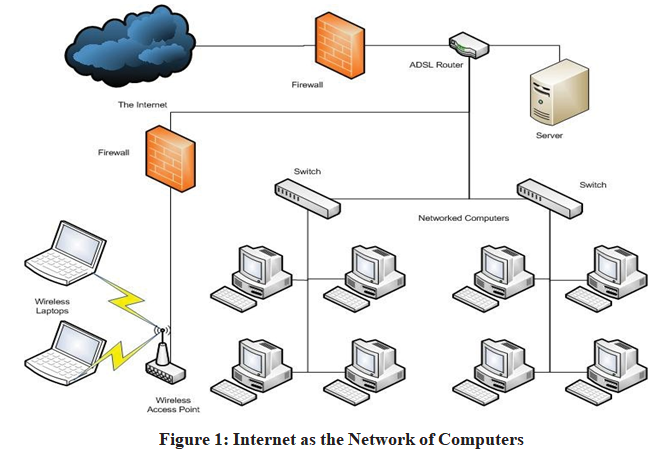Answer:
Some simplified description of the internet is “a large computer network” or “network of networks”, “an instantaneous and global messaging system”. However, the internet has become more than this. It has grown into an important infrastructure supporting an increasingly widespread, multi-disciplinary community. This community now consists of students, scientists, researchers, large corporations, government agencies and individual consumers.
It is difficult to define the internet simply because it is not a single entity. Instead, it is an immensely complex combination of thousands of technologies and dozens of services used by tens of millions of peoples around the world each day. While overly simplistic definition like “Internet is a network of networks” is technically accurate. Internet mean INTERnation NEtwork, a network of all the computer, network above the globe. So, Internet is a network of networks, made by joining computer networks together with telephone lines.
The internet has a large number of computers all over the world, joined together to form a “spinal column of backbone.” Each of these is connected to thousands of others and so on. Thus millions and millions of computers make up the internet. These different computers and networks are united with the common thread of two protocols, like Internet Protocol (IP) and Transmission Control Protocol (TCP).

History of Internet:
In 60’s a project was undertaken by the U.S. Defense Advanced Research Projects Agency (DARPA). It was, in fact looking for some technology that could enable it to maintain its strategic military based communication worldwide in case of nuclear attack. This can be said as the main conception of the internet.
Later, this development led to the establishment of the Advanced Research ProjectsAgency Net (ARPANet). The main interest of this agency was to look for a technology that could link computers at various locations by using a new technology called Packet Switching Technology (PST). This new technology allowed the creation of nets that could automatically route data around the downed circuits or computers. It also enabled several users to simultaneously share a single communication line. This technology was then used by National Science Foundation (NSF) to create its own net, and called it NSFnet. Since the user was mostly scientists and researchers, the demand went on increasing endlessly. NSF found itself unable to cope with it. As a result, a decision was taken to open the Net for use by private organizations as well. This allows anyone with a modem and a computer to access the Net. Thus the beginning of Internet was made. Thus NSFnet became the backbone of communication service for the Internet and continues to do so even now. At present, NSFnet comprises a set of high speed data connections that join the major networks all over the world.
Characteristics of Internet:
The internet has the following characteristics:
- Compressed of Billions of Files – files pertaining to thousands of subjects, disciplines and professions are available in different file formats.
- A Complex Network – as a simplified definition “network of networks” internet comprises over 170 million computers.
- Disorganized – the internet can be cumbersome and confusing even for experienced users.
- A Decentralized System – millions of individual networks and over 154 millions individual computers connected through the world.
- Dynamic – changing every minute of every day. On an average, a new network is connected to the internet everythirty minutes.
- Widely used – more than 160 million people use the Internet, over 50 million of whom use it daily.
- Expanding Exponentially – the internet is growing at the rate of 15% per month.
- International in Scope – this global network is accessed by people in approximately 150 countries.
Total Views: 88
